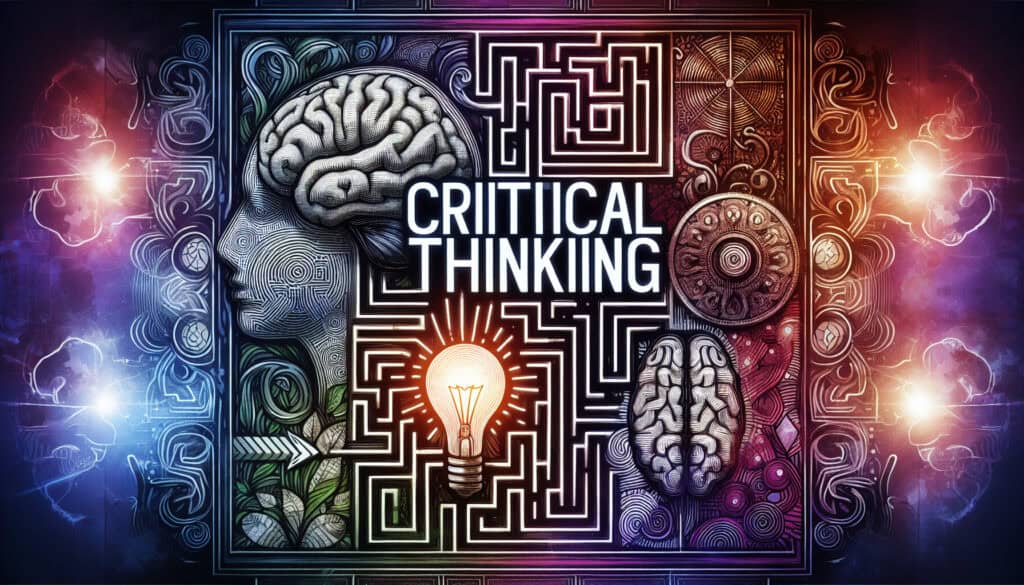L'analisi e la valutazione oggettiva di una questione al fine di formulare un giudizio.
- Metodologie: Clienti e marketing, Economia
Pensiero critico

Pensiero critico
- Analisi della varianza (ANOVA), Miglioramento continuo, Tecniche di risoluzione dei problemi, Gestione della qualità, Gestione del rischio
Obiettivo:
Come si usa:
- It is a disciplined process of actively and skillfully conceptualizing, applying, analyzing, synthesizing, and/or evaluating information gathered from observation, experience, or reflection.
Professionisti
- Leads to more rational and well-informed decisions; helps to identify logical fallacies and pregiudizi; promotes clear communication and problem-solving.
Contro
- Requires conscious effort, skill, and practice; can be slower than intuitive decision-making; may be perceived as overly negative or critical if not applied constructively.
Categorie:
- Ingegneria, Risoluzione dei problemi, Gestione del progetto
Ideale per:
- Evaluating information, arguments, and potential solutions in a logical and unbiased way to make better decisions.
In product design and innovation, the application of critical thinking is often seen during the ideation and evaluation phases where teams are tasked with generating ideas and assessing their feasibility. This methodology is widely utilized in industries such as technology, consumer goods, healthcare, and engineering, where complex problem-solving and decision-making are prevalent. Participants may include cross-functional teams composed of designers, engineers, marketers, and project managers, who collectively assess and refine concepts through structured discussions and debates. For example, in developing a new dispositivo medico, critical thinking can be employed to evaluate the implications of various design choices on usability and regulation compliance. Techniques like SWOT analysis or root cause analysis can further support these discussions by identifying strengths, weaknesses, opportunities, and threats associated with each idea. By maintaining a focus on logical reasoning and objective evaluation, teams can pinpoint biases or misconceptions that exist in their assumptions, leading to more informed and robust solutions. The methodology not only enhances collaboration and communication among diverse stakeholders but also contributes to a culture of continuous improvement, as participants learn to question their own and others’ viewpoints while exploring innovative approaches and technologies. In project management contexts, clear documentation of reasoning processes can facilitate iterative design refinements and enable teams to track the evolution of ideas and decisions.
Fasi chiave di questa metodologia
- Define the problem or question clearly.
- Gather relevant information from various sources.
- Analyze the information for validity and reliability.
- Identify assumptions and biases influencing the perspective.
- Develop and consider multiple solutions or arguments.
- Evaluate the strengths and weaknesses of each solution.
- Make a decision based on logical reasoning and evidence.
- Reflect on the decision-making process and outcomes.
Suggerimenti per i professionisti
- Continuously question and dissect underlying assumptions in existing designs or ideas to uncover hidden limitations or biases.
- Utilize structured frameworks like the Socratic method, enabling deeper discussions that reveal potential flaws in reasoning and promote alternative viewpoints.
- Engage in interdisciplinary collaboration to challenge conventional wisdom, enhancing the depth of analysis and expanding the range of potential solutions.
Leggere e confrontare diverse metodologie, raccomandiamo il
> Ampio archivio di metodologie <
insieme ad altre 400 metodologie.
I vostri commenti su questa metodologia o ulteriori informazioni sono benvenuti su sezione commenti qui sotto ↓ , così come tutte le idee o i link relativi all'ingegneria.
Contesto storico
1960
1980
1983
1990
1995
2000
2010
1950
1980
1980
1986
1994
1995
2000
(se la data non è nota o non è rilevante, ad esempio "meccanica dei fluidi", viene fornita una stima approssimativa della sua notevole comparsa)














Post correlati
Simulazione di Monte Carlo
Test basati su modelli
Controllo del modello
Ricerca con metodi misti
A prova di errore (Poka-Yoke)
Test del profilo di missione